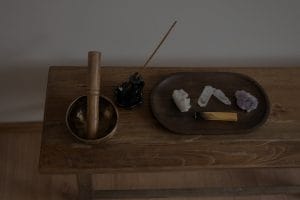**Abstract:** Discover how feng shui colors influence your mood and well-being. This article explores the emotional impact of different colors, guiding you to create harmonious spaces for a balanced life.
Color Psychology in Feng Shui
Feng shui, an ancient Chinese practice, emphasizes the importance of harmony and balance in our surroundings. One of the key elements of feng shui is color, which significantly impacts our mood and energy levels. Understanding the psychological effects of various colors can help you create a more positive environment. For instance, warm colors like red and orange can energize a space, while cooler shades such as blue and green promote tranquility. By strategically incorporating these colors into your home or workspace, you can enhance your emotional well-being and productivity.
The Power of Warm Colors
Warm colors, such as red, orange, and yellow, evoke feelings of warmth and excitement. Red is often associated with passion, love, and energy, making it an ideal choice for spaces where you want to foster enthusiasm and creativity. Orange, a vibrant and cheerful color, stimulates communication and social interaction, perfect for living rooms or gathering spaces. Yellow, the color of sunshine, promotes happiness and optimism, making it suitable for kitchens and dining areas. Incorporating these colors can uplift your mood and invigorate your environment.
The Serenity of Cool Colors
Cool colors like blue, green, and purple are known for their calming effects. Blue is linked to tranquility and peace, making it an excellent choice for bedrooms or meditation spaces. It can help reduce stress and anxiety, promoting a restful atmosphere. Green, representing nature and growth, brings balance and rejuvenation. It’s ideal for home offices or study areas, enhancing focus and concentration. Purple, often associated with spirituality and creativity, can inspire deeper thinking and reflection. Using these colors thoughtfully can create a serene environment that nurtures your mental well-being.
Balancing Color Schemes for Optimal Energy
Achieving a harmonious balance of warm and cool colors is essential in feng shui. Too much of either can lead to emotional imbalance. For instance, a room dominated by warm colors may feel overly stimulating, while an excess of cool colors can create a sense of detachment. Aim for a balanced palette that incorporates both to foster a dynamic yet calming atmosphere. For example, pairing a warm accent wall with cool furniture can create an inviting yet restful space. This balance not only enhances the aesthetics but also supports emotional stability.
Practical Tips for Using Feng Shui Colors
When implementing feng shui colors in your space, consider the function of each room. In areas meant for relaxation, such as bedrooms, opt for soothing colors like soft blues or greens. For workspaces, energizing hues like yellow or orange can enhance creativity and productivity. Additionally, pay attention to the natural light in each room; colors may appear differently depending on the light. Experiment with samples to find the perfect shade that resonates with your emotional needs. Remember, the goal is to create a space that feels harmonious and supportive of your well-being.
Conclusion: Transforming Your Space with Color
Understanding feng shui colors and their impact on your mood can empower you to transform your living and working environments. By thoughtfully selecting colors that align with your emotional goals, you can create spaces that enhance your overall quality of life. Whether you’re looking to energize, calm, or inspire, the right colors can make all the difference. Embrace the power of color in feng shui, and watch as your surroundings positively influence your mood and energy.










